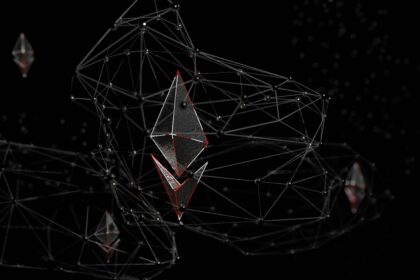Zaros has emerged as a promising decentralized exchange (DEX) specializing in perpetual futures. The recent X Spaces recap session featured Zaros co-founders Guilherme Bettanin and Pedro Bergamini, who shared their insights on the platform’s innovative features, strategic partnerships, and future plans for decentralized governance. This X Spaces recap offers a closer look at how Zaros is revolutionizing the perpetual futures trading landscape.
A User-Friendly Approach to Perpetual Futures Trading
According to officials, Zaros aims to combine user-friendly features and strategic incentives to attract and retain active traders and liquidity providers. As an Ethereum Virtual Machine (EVM)-compatible perpetual DEX, Zaros facilitates leveraged trading across various markets, including crypto, forex, and commodities. The platform integrates liquid staking with perpetual futures, enabling holders of liquid staking tokens (LSTs) and liquid restaking tokens (LRTs) to lend their liquidity to support perpetual markets.
“Our whole vision from the beginning is to make it feel like you’re trading on a centralized exchange (CEX),” said Bettanin, addressing common complexities associated with DEX platforms. To achieve this goal, Zaros implemented several user-friendly features, including an intuitive UI/UX, support for long-tail assets, and login options via Apple ID or email. Additionally, a sub-account system is present for isolated margin trading.
Enhancing Trading and Liquidity with a Dual-Engine Approach
“Zaros is actually made up of two products,” Bergamini explained. “The first is a perpetual trading engine that is already live on a testnet. The second, which is still under development, is a market-making engine designed to incentivize liquidity providers with trading fees.”
For traders, Zaros’ two-pronged approach unlocks several key features. Users can bridge assets from Ethereum to Arbitrum, the blockchain on which Zaros operates. The platform supports leverage through a pre-determined loan-to-value ratio based on collateral type. Median price data feeds are aggregated from major CEXs, ensuring users receive competitive quotes.
Engaging the Community and Rewarding Participation
To foster early community engagement, Zaros launched a special program during the testnet phase to reward traders. “We want to build a relationship with the community early on,” Bettanin said. The program uses a tiered zPoints system based on trading activity, enabling users to earn points through actions such as trading volume and profit targets. These points can be converted into a multiplier within a league system, with higher tiers offering increased rewards.
“There are several ways to participate in the points campaign without investing anything,” Bettanin added. One notable method is allowing users to mint fake Ether (ETH) and USD Coin (USDC) to test trading strategies and indicators without any financial risk. The program also rewards token holders and liquidity providers (LPs). Owning ZRS tokens earns users points while providing liquidity on Balancer unlocks the highest point potential.

Projected Earnings for Liquidity Providers
Bettanin shared that LPs can earn a base rate of 70% of all trading fees without taking directional risk against traders. The remaining 30% goes to the Zaros DAO for buybacks, burns, and development initiatives. Specifically:
- 15% to veZRS lockers: This portion incentivizes long-term holding and participation in the ecosystem.
- 10% to the DAO Treasury: Reserved for the DAO Treasury, this portion supports the DAO’s decision-making processes.
- 5% for buyback and burn of ZRS: This portion reduces the overall supply by buying back and burning ZRS tokens.
The X Spaces recap session also highlighted that Zaros LPs can be rewarded with Boosted Restaking Vaults. These vaults offer boosted returns by combining trading fees from the perpetuals DEX, zPoints, and incentives from Zaros’ partner integrations.
“We have risk management features that allow LPs to remain delta-neutral,” Bergamini emphasized. Zaros uses a velocity-based funding rate system that adjusts every second based on market skew — the difference between long and short positions. Additionally, all prices are marked based on this skew and the configured scale per market.
Stablecoin Integration and Future Plans
Zaros’ stablecoin USDz functions as a settlement asset within the ecosystem, streamlining payouts for traders and LPs. The platform’s modular infrastructure accepts multiple collateral types, including yielding assets like LSTs and standard ERC-20 tokens, catering to both traditional finance and decentralized finance (DeFi) users.
Currently in public testing on Arbitrum Sepolia, Zaros plans to deploy on Monad’s mainnet later this year. Bettanin explained that Monad’s focus on parallelism is key to scaling DeFi applications to centralized finance.
Conclusion
This X Spaces recap reveals how Zaros is paving the way for efficient perpetual futures trading. With its user-friendly approach, innovative dual-engine system, and strategic community engagement, Zaros is well-positioned to revolutionize the decentralized trading landscape. By leveraging advanced risk management features and integrating stablecoins, Zaros aims to provide a seamless and efficient trading experience for its users. As the platform moves toward its mainnet launch, the future looks promising for Zaros and its growing community of traders and liquidity providers.




























